An Advanced Guide To The Basics Of Herbalism & Herbal Medicine
Introduction:
Herbal medicine has existed for many centuries.
For much of history, it was the only medicine, and even in some cultures today, it is the preferred treatment of choice as compared with modern medicine.Disclaimer
All the material contained on this page is provided for educational and informational purposes only.
No responsibility can be taken for any results or outcomes resulting from the
use of this material.
While every attempt has been made to
provide information that is both accurate and effective, M.a.R.S (Meditation and Relaxation Station) does not assume any responsibility for the accuracy or
use/misuse of this information.
An Advanced Guide to the Basics:
The Internet has opened the door to people discovering more treatment options.Researchers have also studied traditional herbal remedies in comparison with Western medicine and found many herbs to be safe and effective.
This should not really be surprising, since up to 75% of the medicines we take originate in nature, not a lab.
Herbal medicine, or herbalism, is one of many different kinds of “Complementary and Alternative Medicines” (CAM), many of which are now evidenced-based to the point where many insurance companies cover the treatment.
While it is true that just because a herb is natural does not mean that it is free from risks and side effects, Western and traditional medical practitioners know more about herbs, doses, effects and interactions than ever before.
They are often inexpensive as well, and can be used in a variety of ways, including fresh, dried, pills, powders, poultices on the skin, tea and more.
In this guide, we will discuss the herbal medicine, the different branches of herbal medicine, and common remedies that are useful in most herbal medicine cabinets.
We will also discuss remedies used to treat particular medical conditions, for safe, effective relief.
Let’s start with an overview of the four main schools of herbalism.
The Four Main Schools of Herbalism:
The four main schools of herbalism from which we get herbal remedies and source herbal treatments and preparations are:• Ayurvedic Medicine
• Traditional Chinese Medicine (TCM)
• Celtic/Roman/European Herbalism
• Native American Medicine
Let’s look at each of these in turn.
Ayurvedic Medicine:
Ayurvedic medicine has been practiced on the Indian subcontinent for more than 5,000 years.It is a complete system of health and well-being based upon maintaining balance in the body.
Part of that maintenance involves using herbs to cleanse, purify and balance the doshas, the elements which are believed to comprise the human body, such as earth, air, fire, and water.
Ayurveda is known as the mother of all medicines because it has served as the foundation for other forms of medicine, including Traditional Chinese Medicine and Western medieval medicine, with its idea of the “humors” in the body, similar to the doshas.
Traditional Chinese Medicine (TCM):
TCM drew its inspiration from Ayurveda, and has been practiced for around 3,500 years.The goal of TCM is to balance the qi, or chi (chee), roughly translated as the life force energy.
Balancing and stimulating qi is thought to be the root of health and vitality, and even longevity.
Celtic/Roman/European Herbalism:
European herbalism has several strands that date back thousands of years.The Celts, and in particular, the druids, used herbs for healing, religious rituals and more.
The Gauls and Germanic tribes would also have used local herbs to treat illness.
Ancient Roman medicine is one of the other foundations of Western medicine.
Some texts have come down to us over the centuries that list herbal remedies for a range of purposes.
Herbalism is still very popular in Europe, such as Culpeper’s herbs in England or Bach Flower Remedies from Germany.
The herbs are usually very pure and often grown organically.
Always look for herbs manufactured in the European Union and Britain, or in the US and Canada.
Native American Medicine:
Native American medicine has been practiced for thousands of years.It was only with the coming of the Europeans to the Americas that some of their knowledge started to get written down rather than just passed along orally from one medicine wo/man to the next.
A growing body of research is starting to show just how effective some herbs can be.
The most obvious example is “Jesuit bark” of the cinchona tree, which is the source of quinine to fight malaria.
Some herbalists use all 4 traditions, while others specialize in just one, such as Ayurveda and TCM. It is important to find a skilled practitioner who knows a lot about herbs, and possibly also any condition you might wish to treat.
It is also important to note that just because an herb or spice is natural does not mean it is completely safe or free from side effects. For example, birch bark is the source of the active ingredient in aspirin, but aspirin can kill if you are allergic to it.
A good database should tell you what the herbs are used to treat, and the possible side effects and interactions.
On average, a person over 50 will take different medications per day, plus vitamins and herbal supplements.
“Polypharmacy” also poses health risks, so be sure to keep an up-to-date list of everything you are taking, and bring it with you to any appointment you might have with a traditional doctor or a herbalist.
Now that you know about the four main schools of herbalism, and the pros and cons of using herbs for healing, let’s look next at some of the basic herbs and spices to have on hand at home to treat common ailments.
10 Must Have Medicinal Herbs and Spices to Have on Hand at Home:
There are a number of herbs and spices you should have on hand as a natural first aid kit for life’s little health issues.
Here are 10 useful ones that will cover a range of conditions:
1. Aloe Vera
2. Chamomile
3. Garlic
4. Ginger
5. Ginseng
6. Milk Thistle
7. Nettle
8. Turmeric
9. Valerian
10. Willow bark
Aloe Vera:
Aloe vera is a spiky plant from southwestern America that can be grown easily inside your home.
You can snip off the tips of the plant and squeeze out the juice, to be used or various healing purposes.Some people will also peel it and run it through a food processor or blender for a thick gel-like paste that can be applied as a poultice.
It is used in traditions for skin care. It soothes inflammation and burns and speeds healing.
It is regularly used for eczema, psoriasis, dandruff and more.
The juice is also used for digestive issues such as colic and inflammatory bowel disease. It will also lower blood sugar naturally, so is used by those with diabetes and people interested in weight loss.
Don’t take with other diabetes medications, certain laxatives, blood thinners such as warfarin, or digoxin for the heart.
Chamomile:
Chamomile (Roman chamomile) is a soothing herb that helps with mood disorders and digestive issues.It has a calming and soothing effect and can help relieve depression, anxiety, sleep issues and digestive issues.
A cup of chamomile tea is a soothing swap for regular tea or coffee, and ideal after meals or before bed.
It can also be used for minor cuts and abrasions, and to soothe inflamed skin.
It should be avoided by pregnant and nursing women, and anyone allergic to ragweed.
Garlic:
Garlic is used for flavor in food and for heart health.It increases circulation and lowers cholesterol, particularly triglycerides, which are created from eating too many calories, especially carbohydrate calories, rather than burning them off.
It is full of antioxidants and antibacterial and antifungal properties. It may smell a bit strong, but garlic can help maintain oral health by killing germs.
It also serves as a blood thinner for people concerned with blood clot or atrial fibrillation.
Because it is such an effective blood thinner, it can interfere with blood pressure and cause bleeding after surgery.
Some people find it irritates their stomach.
Ginger:
Ginger has been used as a medicinal herb for centuries in both Ayurveda and TCM.It is tasty and can be used in a variety of India and Chinese dishes.
It is great for digestive disorders and also helps with circulation.
It lowers high blood pressure naturally and keeps blood vessels clear of cholesterol.
It can lower blood sugar and increase your risk of bleeding, so avoid using it in high doses.
Ginseng:
Ginseng has been used in Asia and North America for centuries for a variety of purposes designed to support good health.
It can boost energy, reduce stress, aid in weight loss, and treat sexual issues such as loss of libido.
It improves breathing, lowers blood sugar levels, supports the immune system, and reduces inflammation.
It can be used in a variety of forms, from tea to capsules.
Those with heart conditions, diabetes, or a manic mental disorder should avoid ginseng.
It might also trigger bleeding.
Those with hormonally-related cancers such as ovarian cancer should not use ginseng.
Milk Thistle:
Milk thistle is like a liver cleanse in a pill.It aids digestion, boosts liver function, lowers cholesterol naturally, and is helpful for hepatitis and diabetes.
It boosts the immune system and is high in antioxidants.
It will even leave your skin looking radiant.
It has been used for centuries in Europe and was then brought to North America.
It can cause more bleeding after surgery, will lower blood sugar, and should not be used by anyone with hormone-related cancers such as ovarian.
Turmeric:
Turmeric comes from a root that looks similar to ginger.When powdered, it has a cheerful yellow color, and a subtle nutty taste that makes it a staple of Indian food, and in particular, rich dishes.
It is used for many health conditions, including weight loss, lowering high cholesterol, burning fat more efficiently, and aiding in digestion.
It is said to be good for the liver and kidneys.
It is also used as a compress or wash to soothe the skin.
Many arthritis patients use it for pain relief because of its anti-inflammatory properties and claim it works just as well as over the counter or even prescription medicines, but with fewer risks of side effects.
Some people make it into “Golden Milk,” a type of turmeric tea with other spices, including turmeric, cinnamon, ginger and pepper.
It is supposed to be rich in disease-fighting properties.
It can be made with nut milk or coconut milk (but drink sparingly to start with because coconut milk can cause an upset stomach until you get used to it.)
Avoid if you have bleeding disorders, diabetes, gallbladder problems, or hormonally-related cancer.
Valerian:
Valerian is commonly prescribed as a sedative and sleep aid that can relieve anxiety and help with insomnia.It is also used for pain relief and chronic fatigue.
Some people also use it to relieve the hyperactivity in Attention Deficit- Hyperactivity Disorder (ADHD).
Because it slows down responses and has a calming effect, do not operate heavy machinery after taking it, and be aware that it can affect anesthesia levels if you have surgery.
Now that you have started your all-purpose medicine cabinet, let’s look at specific ailments you might wish to deal with.
Safe and Effective Herbs for Common Ailments:
There are a number of common health issues that people are seeking safe, natural and effective relief for.The common ailments we will be discussing are:
1. Arthritis and Pain Relief
2. Colds, Flu, Nasal and Chest Congestion
3. Digestive Disorders
4. Headaches and Migraines
5. Lowering Blood Pressure Naturally
6. Lowering Cholesterol Naturally
7. Menopausal Symptoms
8. Mood Disorders
9. Skin Issues
10. Sleep Disorders
11. Weight Loss
Let’s start with arthritis and pain relief.
Arthritis and Pain Relief:
Arthritis is a common cause of chronic pain.The trouble is that many over the counter remedies can cause internal bleeding or liver damage.
The next few pages shows some herbs to try:
Nettle:
Nettle is rich in a range of antioxidants that can relieve inflammation.It also has diuretic properties, removing excess fluids in the body through urination.
Many with prostate issues find it relieves many of their urinary tract symptoms in addition to relieving pain.
You can take it in pill form or as a tea.
Those with diabetes, or who are pregnant or breast feeding, should use with caution.
It can also cause kidney issues and low blood pressure.
Willow Bark:
Willow bark has been used since the time of Hippocrates in ancient Rome to relieve pain and inflammation.It is the origin of the active ingredient in aspirin.
It relieves inflammation safely in people who are not allergic to aspirin.
It can be used in pill form, or the oil can be used as part of a therapeutic massage.
It has also be used for colds and flu, to relieve aches and pains.
It has also been used for weight loss.
Those with bleeding issues should not take it, as it thins the blood like aspirin.
Burdock Root:
Burdock root is another mainstay of herbal medicine because it has so many different uses, and in particular, helps with arthritis.Burdock root is used as a tea, or tincture to relieve pain and inflammation.
It contains essential fatty acids and has a pleasant taste similar to root beer.
Those with diabetes, bleeding issues or ragweed allergy should avoid.
Juniper Berries:
Juniper berries are often used to treat arthritis and other aches and pains.It is also useful for detoxification due to its diuretic properties, which remove excess water and bloat from the body.
It is used topically in salves and ointments, and as a mild tea.
However, prolonged use could lead to kidney issues, so it is best used topically.
Those with diabetes or who are pregnant or breast feeding should avoid it.
Those with stomach disorders or high or low blood pressure should also beware.
Boswellia:
Boswellia is also referred to as frankincense, or Indian frankincense.It has been valued as early as Biblical times for reducing pain and inflammation, especially as part of a massage.
Indian frankincense is a mainstay of Ayurvedic medicine and used for many different purposes.
It can relief pain through topical creams, and also through the essential oil being inhaled as part of aromatherapy.
There is some indication it can also be helpful against autoimmune disorders such as rheumatoid arthritis.
It is considered safe for most people.
However, some skin rashes and diarrhea have been reported after using creams containing boswellia, or taking it internally.
Cats Claw:
Cat’s claw, not to be confused with cat’s food, is used in both North America and Europe for a wide range of health issues, most commonly arthritis pain relief.It is effective for both osteoarthritis pain and rheumatoid arthritis pain.
It should be avoided by anyone with an autoimmune disorder like MS or lupus, bleeding disorder, low blood pressure or leukemia.
Hibiscus:
Hibiscus is pleasant-tasting and a main component of most herbal teas.It serves as a diuretic to reduce bloating and removes excess sodium from the body, which both serve to lower blood pressure.
Research has shown that the active ingredients in hibiscus are similar to a certain class of medication used to treat high blood pressure, ACE inhibitors.
Those with diabetes or low blood pressure should use with caution.
Those already taking ACE inhibitors such as lisinopril or ramipril should discuss hibiscus with their doctor.
Headaches and Migraines:
We all get headaches from time to time, but the over the counter remedies taken, such as aspirin or Tylenol can have significant side effects.It is also important to note that headaches from different causes, such as stress and tension, so taking a holistic approach to headache pain can help prevent them in the first place.
In terms of migraine, some people can be laid up for as many as three days in a dark, quiet room because the pain is so excruciating.
Fortunately, there are a number of herbs that have been clinically proven to help with migraine that are also safe.
Butterbur:
This herb is commonly used for treating the symptoms of migraine.It can not only ease current migraines, it can prevent them from happening.
It can also help with cluster headaches, in which a person has several headaches in a row over the course of a couple of days.
Note: Some butterbur preparations contain chemicals called pyrrolizidine alkaloids (PAs), which can damage the liver.
Only butterbur products that are certified and labeled “PA-free” should be used.
Those with liver issues or ragweed allergies should avoid butterbur.
Feverfew:
Feverfew was originally grown in Asia Minor, but its effectiveness as a pain reliever and cure for many other common ailments has caused it to be cultivated all over the world.It has anti-inflammatory properties and prevents spasms in the blood vessels that create a throbbing sensation during headaches and migraines.
It also relieves nausea and light sensitivity in people who have migraines.
As the name suggests, it is also good for reducing fever.
Those with bleeding disorders or ragweed allergies should avoid feverfew.
Passionflower:
Passionflower is another herb with many uses, including pain relief from fibromyalgia and migraine.It is famous for its calming and pain-killing properties.
The physical and mental relaxation it produces lowers the chance of getting headaches.
Drinking passionflower tea before bed improves sleep and further lowers the risk of headaches and migraines.
Some people have reported dizziness, confusion and nausea after taking it, so start out slowly to see what effect it has on you.
Lowering Blood Pressure Naturally:
In November 2017, the American College of Cardiology (ACC) and American Heart Association (AHA) issues new guidelines regarding what should be considered normal blood pressure, and who should therefore be treated in order to lower their blood pressure to the suggested levels.The suggested definition of high blood pressure has been lowered from 140/90 down to 130/80 mm Hg.
Estimates show that up to 50% more Americans could now fall into the high blood pressure and treatment range now that the goalposts have been moved.
High blood pressure can leave you more prone to heart attack and/or stroke and other cardiovascular issues.
Fortunately, there are a lot of natural things you can do to lower it, including:
• Exercising
• Lowering your salt intake (sodium on food labels)
• Avoiding too much water-weight gain/bloating
• Managing your stress
• Maintaining a healthy weight
You can also try various herbs.
Hibiscus:
Hibiscus is pleasant-tasting and a main component of most herbal teas.It serves as a diuretic to reduce bloating and removes excess sodium from the body, which both serve to lower blood pressure.
Research has shown that the active ingredients in hibiscus are similar to a certain class of medication used to treat high blood pressure, ACE inhibitors.
Those with diabetes or low blood pressure should use with caution.
Those with diabetes or low blood pressure should use with caution.
Those already taking ACE inhibitors such as lisinopril or ramipril should discuss hibiscus with their doctor.
Basil:
Basil is the main ingredient in tasty the tasty green Italian sauce pesto.It lowers blood pressure and has antiviral and antibacterial properties.
It eases stress and tension, detoxifies
the body, and eases gastric symptoms.
It eases stress and tension, detoxifies
the body, and eases gastric symptoms.
It should not be used by anyone with bleeding disorders or low blood pressure.
Its ability to lower blood pressure is due
to the active ingredient which is the same as the prescription medicine reserpine.
Indian snakeroot:
Indian snakeroot has been used for thousands of years to treat heart health problems.Its ability to lower blood pressure is due
to the active ingredient which is the same as the prescription medicine reserpine.
Reserpine is used to treat mild to moderate hypertension, schizophrenia, and some symptoms of poor circulation.
It also relieves anxiety and stress.
This herb should only be used under the direct supervision of a qualified Ayurvedic practitioner in order to ensure the dosage is
correct and safe.
There are numerous contraindications to
taking it, including gallstones, ulcers, adrenal gland problems, certain allergies, and more.
taking it, including gallstones, ulcers, adrenal gland problems, certain allergies, and more.
Lowering Cholesterol Naturally:
Many people with high cholesterol are put on statin drugs.However, these are known to have numerous side effects, and have been linked with the growing number of cases of type 2 diabetes in the US.
Cholesterol levels in the body are 25% what you eat, and 75% what you produce within your own body.
Some people produce a lot more than others, so regulating their cholesterol through whatever means possible is one way for them to stay healthy as they age.
Several herbs can help.
hardening of the arteries (arteriosclerosis).
Research has shown that it reduces LDL (bad) cholesterol and boosts the production
of HDL (good) cholesterol.
Skullcap:
Skullcap is used for a wide range of medical conditions, but it is particularly used for lowering cholesterol and combattinghardening of the arteries (arteriosclerosis).
Research has shown that it reduces LDL (bad) cholesterol and boosts the production
of HDL (good) cholesterol.
It is also used to help in recovery after a stroke.
Be careful of skullcap if you are pregnant or nursing, or are planning to have surgery
Indian Gooseberry:
Indian gooseberry has been used for years by Ayurvedic and TCM practitioners to help keep arteries clear of cholesterol.It is also useful for many other health conditions.
However, it should be avoided by those with diabetes, bleeding disorders, or liver disease.
Guggul:
Guggul has been used for centuries in Ayurvedic medicine to lower cholesterol, and in particular stopping bad LDL cholesterol from sticking to blood vessels.Many people claim it works just as effectively as statin drugs, but without any negative side effects.
If you have bleeding disorders, hormone-related cancers, or thyroid issues, you should avoid guggul.
Hawthorn:
Hawthorn is used for treating a variety of heart health problems, including blood pressure issues, high cholesterol, and congestive heart failure.It has powerful phytochemicals in it, however, so it should only be used under a doctor’s supervision if you are already taking heart medications.
Red Yeast Rice:
Red yeast rice is used in TCM and throughout Asia instead of statin drugs.As the name suggests, it is a combination of yeast and rice that has been fermented.
It has been shown as highly effective and can also help with aches, pains and fatigue.
However, because it is so powerful, people under 20, and anyone with liver, kidney or thyroid issues should not take it.
Menopausal Symptoms:
Many women suffer a range of symptoms when they start to undergo menopause, such as hot flashes and night sweats.Here are a couple of herbs to try:
Black cohosh:
Black cohosh has been clinically proven to help with hot flashes and other symptoms.It appears to wok by maintaining hormonal levels, even though it has no estrogen activity.
However, it should be avoided by women with a history of hormonally related cancers, and those with liver or kidney issues.
Dong quai:
Dong quai has been used in TCM for centuries to maintain the natural balance of female hormones.It does not act as an estrogen either.
It is also known as a “blood purifier,” so should be avoided by any woman still having heavy periods, or anyone with a blood disorder.
Evening primrose oil:
Evening primrose oil is derived from a small seed, but it is a powerhouse when it comes to health and healing, especially in relation to the many issues associated with menopause, including hot flashes, lowered bone mineral density, night sweats and weight gain.Take it regularly twice a day for 3 to 6
months in order to see a difference, or 4 times a day for 12 weeks for weight loss.
Those with epilepsy, bleeding disorders or schizophrenia should not take this supplement.
Mood Disorders:
Herbs can be used to treat a number of mood disorders and bring thing back into balance.Our moods affect our physical health, and vice versa. Our physical health issue can often drag us down and make us worried, depressed and/or irritable.
Here are some suggestions for each of these mood issues.
Anxiety:
Anxiety, also referred to as Generalized Anxiety Disorder (GAD), can ruin the quality of a person’s life.Fortunately, there are a number of herbs that can help.
It is most commonly used for relaxation and sleep issues.
It has also been used for treating Alzheimer’s disease and ADHD.
It is safe in general, but is a member of the mint family and can sometimes cause nausea and vomiting.
Certain herbs can help, without the typical side effects of prescription drugs.
The trouble is that it can be too powerful,
and interact with a range of medications.
For this reason, some countries have banned it, while others have updated the warning labels.
Passionflower:
Passionflower (discussed in detail above) is very effective for anxiety and other mood disorders.Lemon Balm:
Lemon balm can help alleviate the symptoms of anxiety and stress.It is most commonly used for relaxation and sleep issues.
It has also been used for treating Alzheimer’s disease and ADHD.
It is safe in general, but is a member of the mint family and can sometimes cause nausea and vomiting.
Depression:
Depression can cause people to lose interest in their everyday activities, and lead a poor quality of life.Certain herbs can help, without the typical side effects of prescription drugs.
St. John’s Wort:
Most people have heard about how effective St. John’s Wort is for mood disorders.The trouble is that it can be too powerful,
and interact with a range of medications.
For this reason, some countries have banned it, while others have updated the warning labels.
Schisandra:
Schisandra is considered a valuable herb in TCM that offers a range of benefits, including elevating mood, while booting energy and improving blood sugar and cholesterol levels.Irritability:
Stress can often make people irritable and short-tempered.Fortunately, there are a number of herbs which can help soothe frazzled nerves.
Vervain (Verbena)
Vervain is used in TCM for mood disorders ranging from depression to irritability.It can be drunk as a tea several times a day.
It also offers pain relief, which can help people feel less irritable.
It is generally considered safe for all except pregnant women.
Lavender:
Lavender is prescribed by many natural health professionals for mood disorders and feeling “on edge.”It alters mood safely without the risk of side effects or addiction.
It calms nervousness and restlessness and can help with migraine and insomnia.
We are rarely at our best when we are suffering from a lack of sleep or have a headache.
Lavender can be used as an essential oil in aromatherapy.
Many people like to sleep with a pillow stuffed with dried lavender flowers as a relaxation and sleep aid.
It is generally safe, but anyone planning to have surgery should stop using lavender about 2 weeks before their procedure.
Skin Issues:
The skin is the largest organ of our body.It protects our internal organs, and acts as a barrier to keep healthy things in, and unhealthy things out.
Unfortunately, a lot of people take their skin for granted. They don’t care for their face and body depending on their skin type, and they often make poor food choices, which can have a direct impact on the appearance and overall health of the skin.
Fortunately, there are a range of herbal remedies that can help you get great skin. Some can be taken internally, while others
can be applied externally to soothe inflamed skin.
Those with bleeding disorders or liver disease should avoid
borage.
It is also used topically for nosebleeds, varicose veins, hemorrhoids, and conjunctivitis of the eye
.
Research has shown that calendula has antiviral, antifungal and antibacterial properties and is suitable to use on all skin types, even sensitive skin.
Many people use calendula in treating diaper rash, chapped lips, minor bruises, and minor cuts and burns.
It is also used as a wash and an astringent to help get rid of acne.
Those allergic to ragweed should avoid calendula.
It can also help with scarring and is commonly used by women to reduce the appearance of stretch marks after they have had a baby.
Those with liver disease should avoid gotu kola.
It can also relieve insect bites and infections from the parasite leishmania.
It should be avoided by people with diabetes and anyone about to have surgery.
Unfortunately, a lot of people take their skin for granted. They don’t care for their face and body depending on their skin type, and they often make poor food choices, which can have a direct impact on the appearance and overall health of the skin.
Fortunately, there are a range of herbal remedies that can help you get great skin. Some can be taken internally, while others
can be applied externally to soothe inflamed skin.
Borage:
Borage soothes skin and relieves inflammation. It is also good for upper respiratory health and oral health. It is eaten in salad and soups and found in many natural skin creams.Those with bleeding disorders or liver disease should avoid
borage.
Lavender:
As discussed above, lavender is a soothing herb, and contains linalool, which can help heal skin and also prevent tissue degeneration and this helps reduce the signs of premature skin aging and wear and tear from stress and pollution.Calendula:
Calendula is applied to the skin to reduce inflammation and to treat poorly healing wounds and leg ulcers.It is also used topically for nosebleeds, varicose veins, hemorrhoids, and conjunctivitis of the eye
.
Research has shown that calendula has antiviral, antifungal and antibacterial properties and is suitable to use on all skin types, even sensitive skin.
Many people use calendula in treating diaper rash, chapped lips, minor bruises, and minor cuts and burns.
It is also used as a wash and an astringent to help get rid of acne.
Those allergic to ragweed should avoid calendula.
Gotu kola:
Gotu kola is a mainstay of Ayurvedic medicine and TCM. It can relieve itchy, scaly skin and help with psoriasis.It can also help with scarring and is commonly used by women to reduce the appearance of stretch marks after they have had a baby.
Those with liver disease should avoid gotu kola.
Marshmallow Root:
Marshmallow root is excellent for skin conditions of all types. It relieves inflammation, abscesses, skin ulcers and more. It helps with chapped skin and chilblains.It can also relieve insect bites and infections from the parasite leishmania.
It should be avoided by people with diabetes and anyone about to have surgery.
Sleep Disorders:
Do you struggle to get a good night’s sleep, tossing and turning for hours?If so, a few good herbal remedies might be just what you need to start getting a full 8 hours of restful, high-quality sleep.
Sleep is essential for good physical and mental health. It also has a direct impact on you weight.
Some prescription sleeping tablets can be additive.
Try the following herbs for safe, natural relief:
It is soothing and calming, and the tea can be quite refreshing.
Sleeping with a pillow with dried lavender flowers in it is one way to ensure a full night of sleep.
Having said that, as we age, our metabolism slows down, so we burn calories less efficiently.
Our appetites stay the same, but it gets harder and harder to lose weight.
Choosing the right foods and exercises can help you stick to a normal weight.
There are several herbs and spices that can also supplement your efforts.
fuller for longer and are less likely to eat mindlessly because you feel famished.
It supports a healthy metabolism. It also kills
off harmful gut bacteria, improving digestion. It can even kill off C Difficile infection, a potentially dangerous gut bacteria that
can severely damage your colon.
Cinnamon is inexpensive and tastes great, so it is easy to incorporate into your diet. To be sure you are getting a quality product, consider buying the sticks and grinding them yourself
so you don’t have to worry about pre-ground cinnamon being adulterated with other substances.
(Most commercial ground cinnamon is described as little better than “floor sweepings.”)
Those with diabetes or liver disease should avoid cinnamon.
Valerian:
Valerian, as discussed above, is a sleep aid that can help relieve insomnia naturally.It is soothing and calming, and the tea can be quite refreshing.
Lemon Balm:
Lemon balm, as discussed above, is soothing and has been used as a sleep aid since the Middle Ages.Chamomile:
Chamomile tea is often used as a sleep aid. It helps with digestion as well, so anyone who might have trouble sleeping due to stomach issues like heartburn will also find it beneficial.Passionflower:
Passionflower tea can calm and relax you enough to get to sleep.Lavender:
Lavender as part of aromatherapy can send you off to sleep and help you stay asleep.Sleeping with a pillow with dried lavender flowers in it is one way to ensure a full night of sleep.
Weight Loss:
Weight gain is a simple question of mathematics. You need to burn more calories than you consume or else you will gain weight.Having said that, as we age, our metabolism slows down, so we burn calories less efficiently.
Our appetites stay the same, but it gets harder and harder to lose weight.
Choosing the right foods and exercises can help you stick to a normal weight.
There are several herbs and spices that can also supplement your efforts.
Cinnamon:
Cinnamon balances blood sugar to help remove cravings. It also slows down the emptying of your stomach, so you feelfuller for longer and are less likely to eat mindlessly because you feel famished.
It supports a healthy metabolism. It also kills
off harmful gut bacteria, improving digestion. It can even kill off C Difficile infection, a potentially dangerous gut bacteria that
can severely damage your colon.
Cinnamon is inexpensive and tastes great, so it is easy to incorporate into your diet. To be sure you are getting a quality product, consider buying the sticks and grinding them yourself
so you don’t have to worry about pre-ground cinnamon being adulterated with other substances.
(Most commercial ground cinnamon is described as little better than “floor sweepings.”)
Those with diabetes or liver disease should avoid cinnamon.
Cayenne Pepper:
Cayenne, or capsicum, contains an active compound called capsaicin. It is used to treat arthritis, but it can also be a great fat-burning aid.It lowers cholesterol and prevents fatty buildup in the blood vessels.
It adds flavor to many dishes, including Mexican and Indian food.
The tastiness of the food can in part help curb appetite-a person will feel more satisfied eating full-flavored rather than bland dishes.
Cayenne pepper is often added to lemon juice to be used as a detox and weight loss drink that will burn fat.
Capsicum is dangerous only if applied topically on broken skin.
Ginger helps promote feelings of fullness, which decreases the urge to binge. Ginger is a natural appetite suppressant, and helps detox the body.
It is often added to lemon juice to help detox.
It is tasty in Chinese and Indian food, and a small amount can be very satisfying.
Cayenne pepper is often added to lemon juice to be used as a detox and weight loss drink that will burn fat.
Capsicum is dangerous only if applied topically on broken skin.
Ginger:
Ginger is beneficial for improving a person’s digestive system as it regulates the movement of food from the stomach to the intestines.Ginger helps promote feelings of fullness, which decreases the urge to binge. Ginger is a natural appetite suppressant, and helps detox the body.
It is often added to lemon juice to help detox.
It is tasty in Chinese and Indian food, and a small amount can be very satisfying.
Garlic:
Garlic adds a great deal of flavor to foods and tends to satisfy cravings. Add to Italian food like homemade pasta sauce and use whole wheat pasta for hearty meals that will help you feel full for longer.Turmeric:
This tasty yellow spice is used widely in Indian cookery and can help curb cravings.Peppermint:
Peppermint soothes the stomach and can settle hunger pangs.The taste is also quite strong, and can reduce oral cravings. Try minty sugar-free chewing gum to keep your mouth busy without packing in lots of calories.
Milk thistle:
Milk thistle cleanses the liver and helps boost digestive health. It speeds the metabolism through the detox process, making it easier to lose weight.Conclusion:
Herbal remedies have been used for more than 5,000 years, with great success.While it is true that not all of it has been systematically been put down in writing, a growing body of research has shown that some herbs can be just as effective as
modern medications, if not more so, and often pose fewer risks of side effects or interactions.
Since a large percentage of prescription and over the counter medicines are derived from herbs and spices anyway, if you are looking for more natural, less synthetic forms of treatment, consulting a qualified herbalist could be your best first step for holistic health and healing.

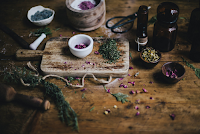
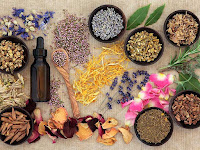


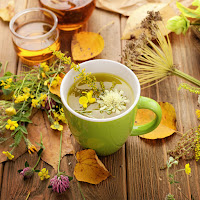





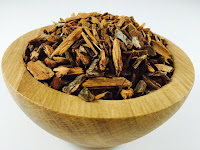

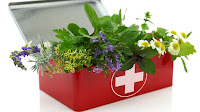

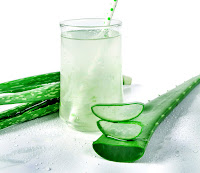
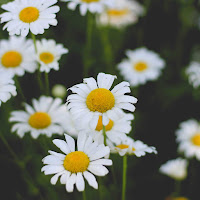
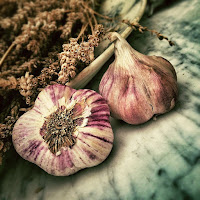

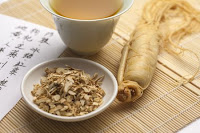


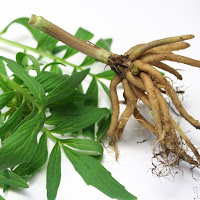

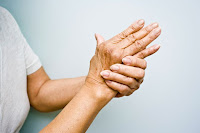

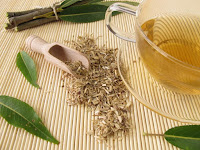













































No comments:
Post a Comment